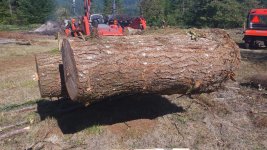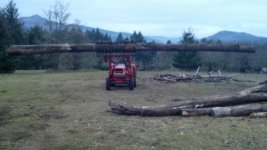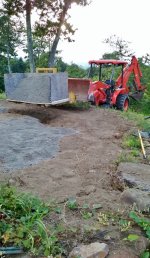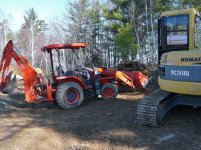Fallon
Super Member
If you don't have proper ballast on your 3 pt, you are overloading your front axle if you lift much. The complex, expensive, fradgile, small front axle is rated for a lot less load than the rear axle. If you lift your rear off the ground, 100% of the tractor & loader weight plus a large part of that load weight ends up on the front axle. Not to mention the fact the front axle is on a pivot & will xa use you to roll.I recently bought a used L5740. On the way to New York to pick it up, I also stopped along the way to grab a used set of wheel weights. When I got home I realized the rear tires were already filled (washer fluid). At that point I already had the weights so I went ahead and installed them anyway. With the wheels set the to the "medium" track width configuration, all 3 weights fit within the wheel and do not extend but maybe a 1/2" out from the face of the rim. I'm not worried about soil compaction in what i'm doing, so I didn't see any reason not to have max weight.
I had a big Cedar fall down across my driveway this weekend. Even with all the tire weight / ballast, the tractor still tried to pick up the rear tires. A 3pt hitch ballast box would certainly be more effective for dedicated heavy loader work. I still like having max ballast, on the tractor allowing me to keep my 3pt hitch available for other use.
View attachment 542692
Ballast on the 3pt tries to make the machine pop a wheely to some degree, taking weight off the font axle & putting it onto the rear. Wheel weights or filled tires help a bit, but ultimately don't have the leverage & make things worse if the back gets light at all. Think of a tractor like teter totter with 2 pivot points. You want a fat kid on one side to make sure only 1 of those pivot points is taking most of the weight.
Any reasonably heavy impliment will work as well as a basllast box. A long heavy rotary cutter or backhoe works best, but sacrifices manuverability. The further back & heavier within reason the better. Generally you want 3/4-1.5 times the weight you are lifting on the loader on the back.




